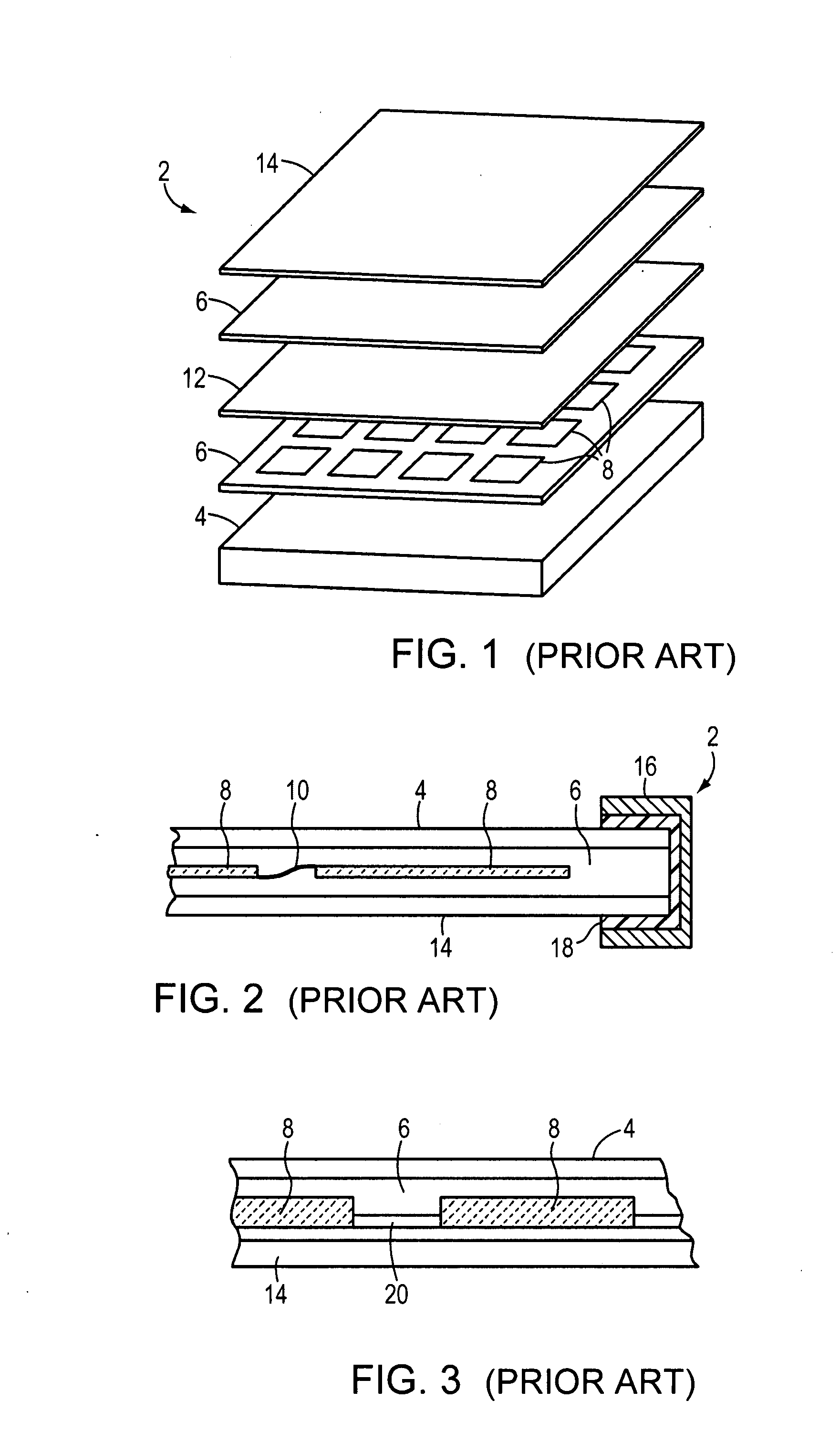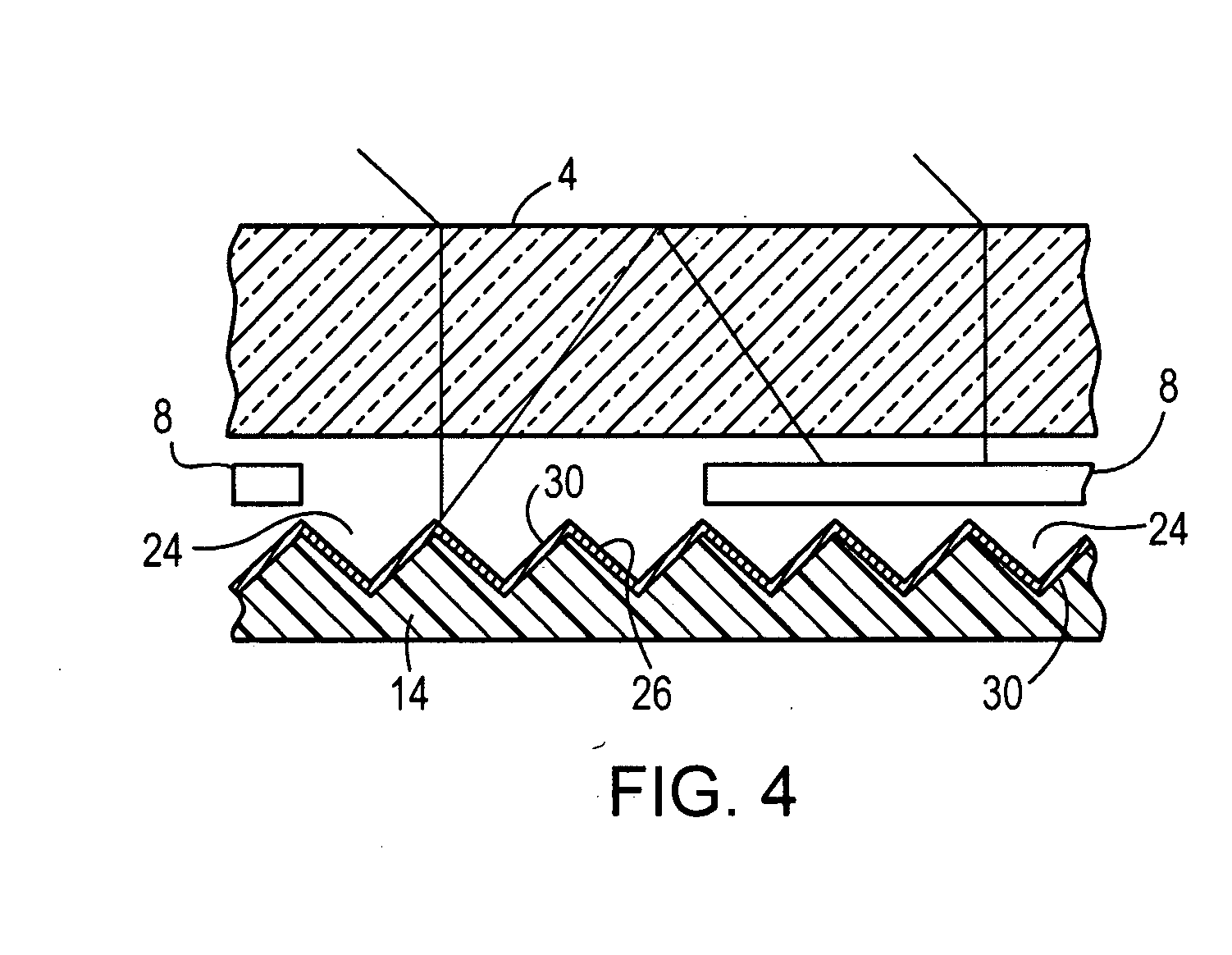Photovoltaic module with light reflecting backskin
a photovoltaic module and backskin technology, applied in the field of solar cell modules, can solve the problems of limiting the temperature, limiting and more difficult to permanently and precisely emboss the polyester base, so as to achieve the effect of improving the power output of the modul
- Summary
- Abstract
- Description
- Claims
- Application Information
AI Technical Summary
Benefits of technology
Problems solved by technology
Method used
Image
Examples
Embodiment Construction
[0041] A description of example embodiments of the invention follows.
[0042]FIGS. 1 and 2 schematically illustrate components of a conventional form of laminated solar cell module 2 that may be modified to incorporate the present invention. The components used to construct the solar cell module comprise a stiff and transparent front cover or superstrate 4 that is made of glass or a suitable plastic such as polycarbonate or an acrylic polymer, a first layer 6 of a light transmitting encapsulant such as EVA, an array of separately formed crystalline silicon solar cells 8 interconnected by conductors 10 (FIG. 2), a porous scrim sheet 12 (omitted from FIG. 2 for convenience of illustration), a second layer 6 of a transparent encapsulant, and a protective back cover or backskin 14 made of an electrically insulating material, e.g. Tedlar™. The conductors 10 commonly are arranged with a stress-relief loop.
[0043] Each PV cell has a p-n junction (not shown) adjacent to its front radiation-r...
PUM
| Property | Measurement | Unit |
|---|---|---|
| angle | aaaaa | aaaaa |
| pressure | aaaaa | aaaaa |
| angle | aaaaa | aaaaa |
Abstract
Description
Claims
Application Information
 Login to View More
Login to View More - R&D
- Intellectual Property
- Life Sciences
- Materials
- Tech Scout
- Unparalleled Data Quality
- Higher Quality Content
- 60% Fewer Hallucinations
Browse by: Latest US Patents, China's latest patents, Technical Efficacy Thesaurus, Application Domain, Technology Topic, Popular Technical Reports.
© 2025 PatSnap. All rights reserved.Legal|Privacy policy|Modern Slavery Act Transparency Statement|Sitemap|About US| Contact US: help@patsnap.com



